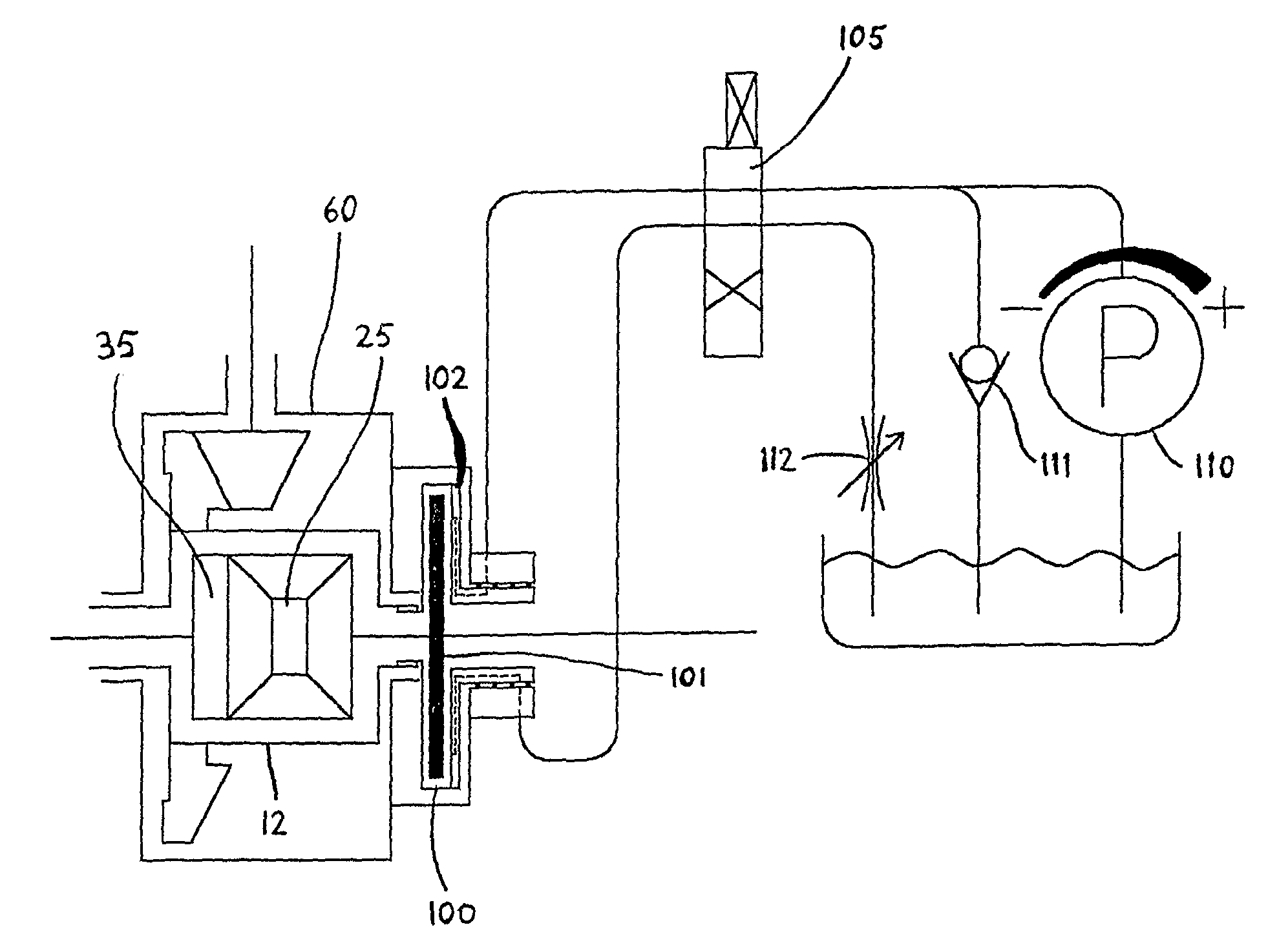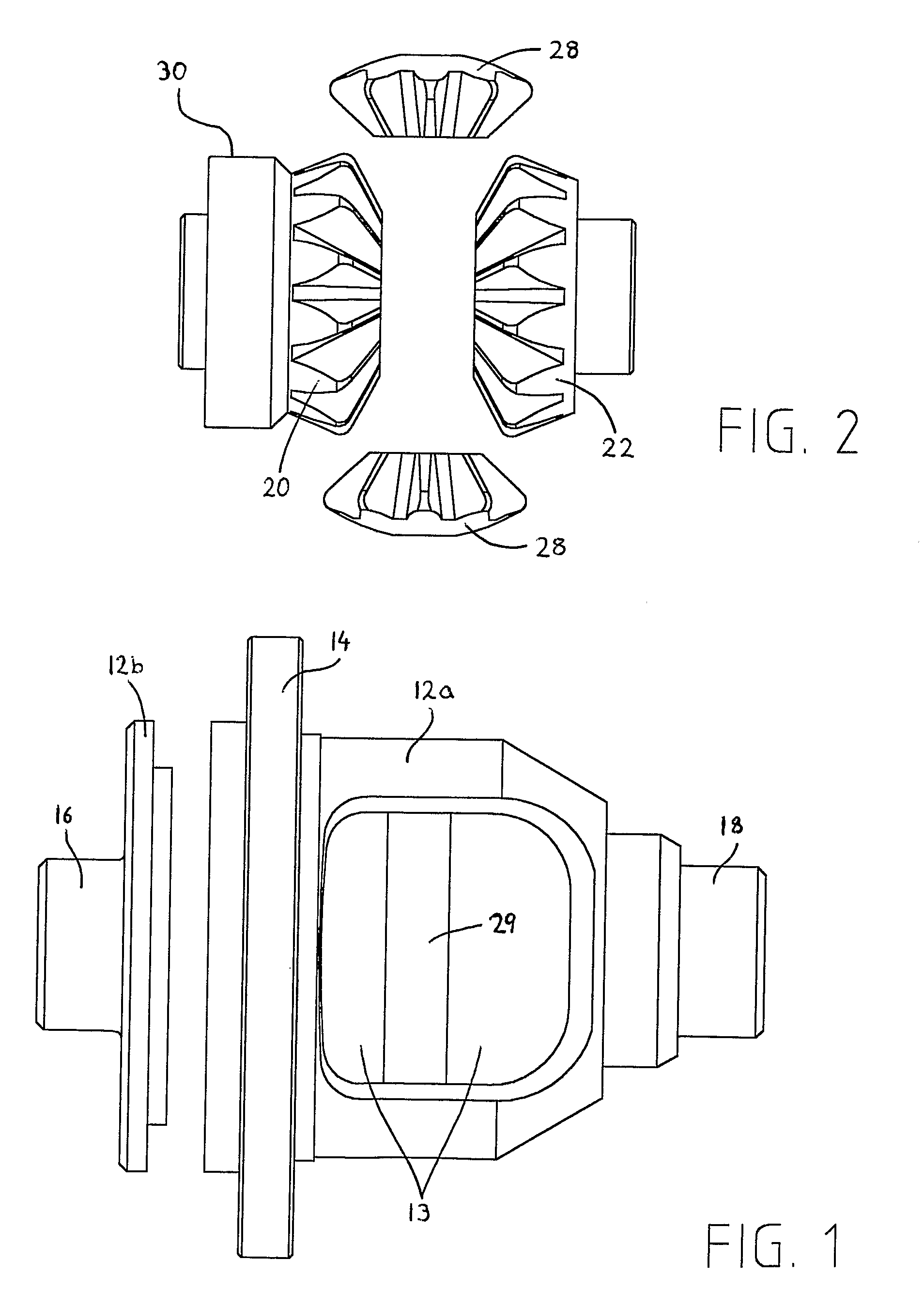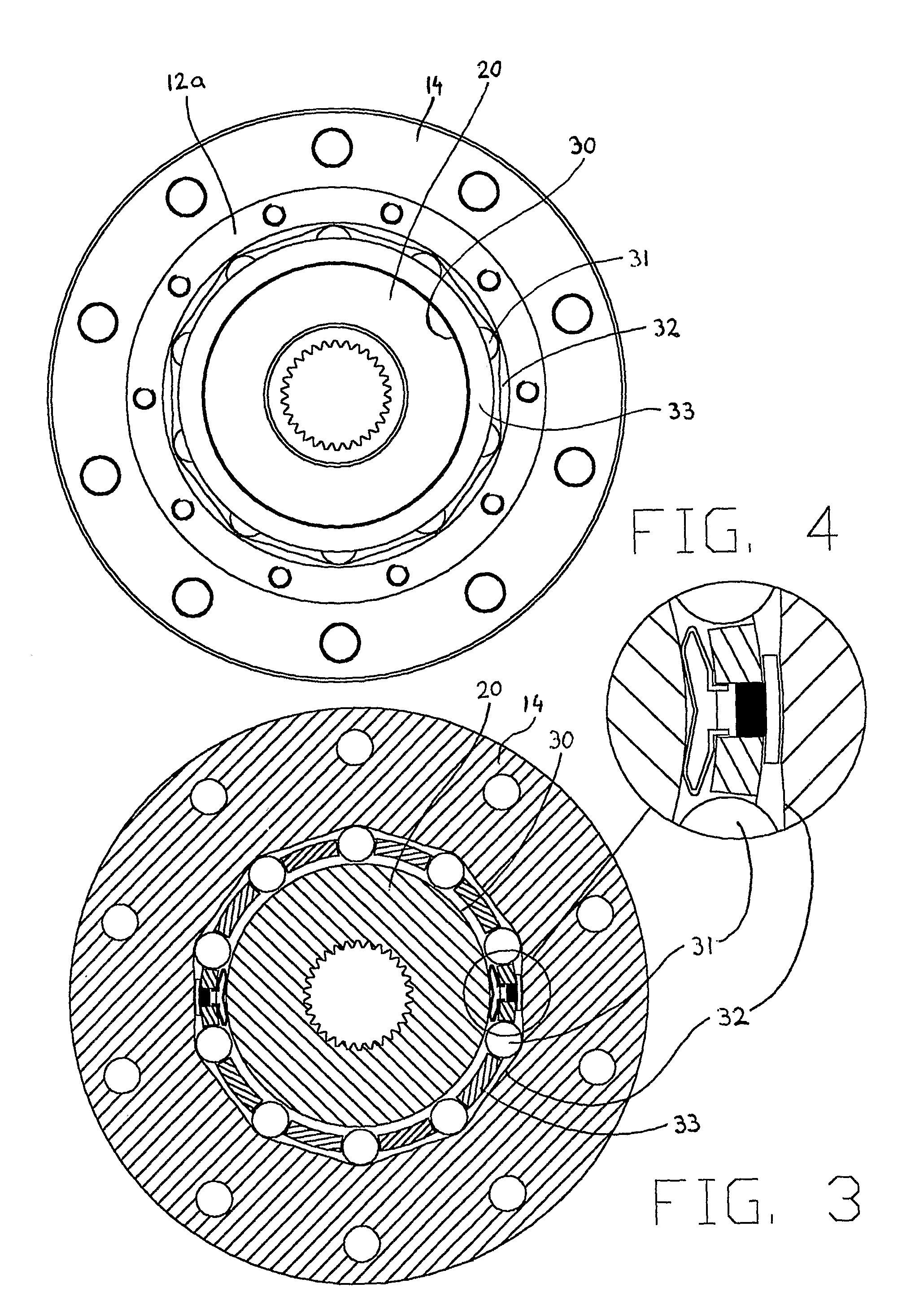Locking differential
a technology of differential and locking, which is applied in the direction of differential gearings, belts/chains/gearrings, mechanical instruments, etc., can solve the problems of unnecessarily high internal losses, open differentials, and the degree of slippage between tyres and road surfaces, and achieve the highest possible efficiency, high cost, and high efficiency
- Summary
- Abstract
- Description
- Claims
- Application Information
AI Technical Summary
Benefits of technology
Problems solved by technology
Method used
Image
Examples
Embodiment Construction
[0054]Referring now to the drawings, which are not intended to limit the scope of the invention to the exact design shown, but rather to enable any person skilled in the art, to make use of its qualities.
[0055]FIGS. 1-18 shows in detail the preferred embodiments, which consist of an input shaft in the form of a differential cage 12 which consists of its main part 12a and its end cover 12b which together form a generally cylindrical body with an inner cavity 13. The outer surface of the cage 12 includes a flange 14 to, in a conventional way, accommodate a ring gear or the equivalent (not shown). The differential cage 12 also at each end includes a pair of hollow stub axles 16, 18. The inner and outer surfaces of said stub axles are both concentric to the rotational axis 9 of the differential cage 12. the inner cavity 13 of the differential cage 12 accommodates a pair of planetary wheels 28 and two output shafts in the form of the two side wheels (sun wheels) 20, 22. The output shafts...
PUM
 Login to View More
Login to View More Abstract
Description
Claims
Application Information
 Login to View More
Login to View More - R&D
- Intellectual Property
- Life Sciences
- Materials
- Tech Scout
- Unparalleled Data Quality
- Higher Quality Content
- 60% Fewer Hallucinations
Browse by: Latest US Patents, China's latest patents, Technical Efficacy Thesaurus, Application Domain, Technology Topic, Popular Technical Reports.
© 2025 PatSnap. All rights reserved.Legal|Privacy policy|Modern Slavery Act Transparency Statement|Sitemap|About US| Contact US: help@patsnap.com



